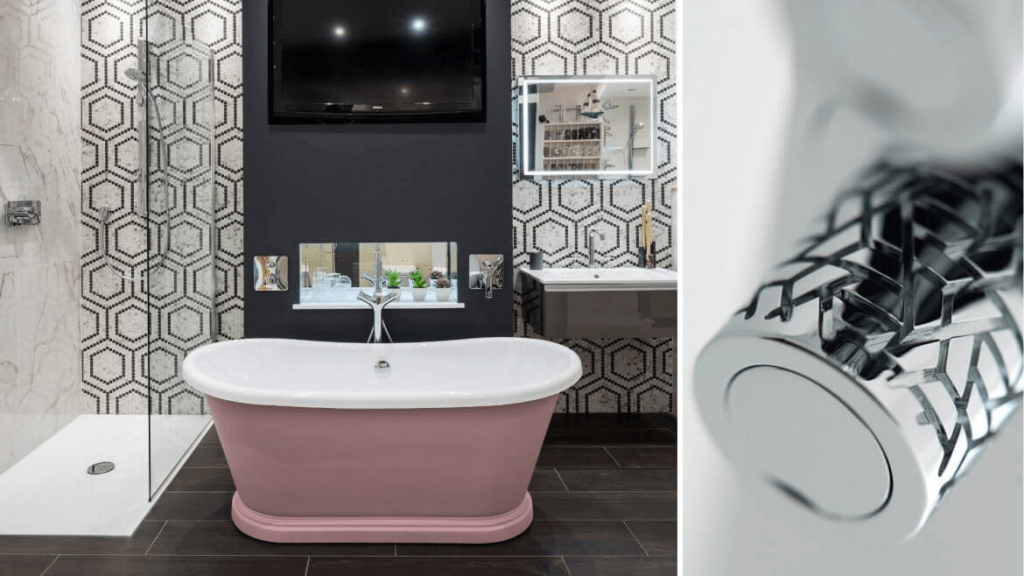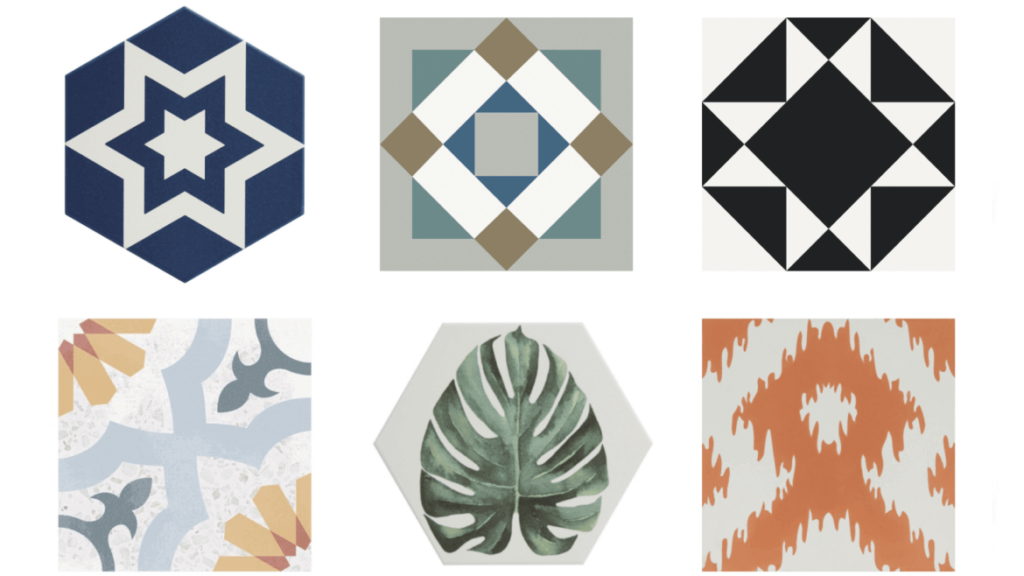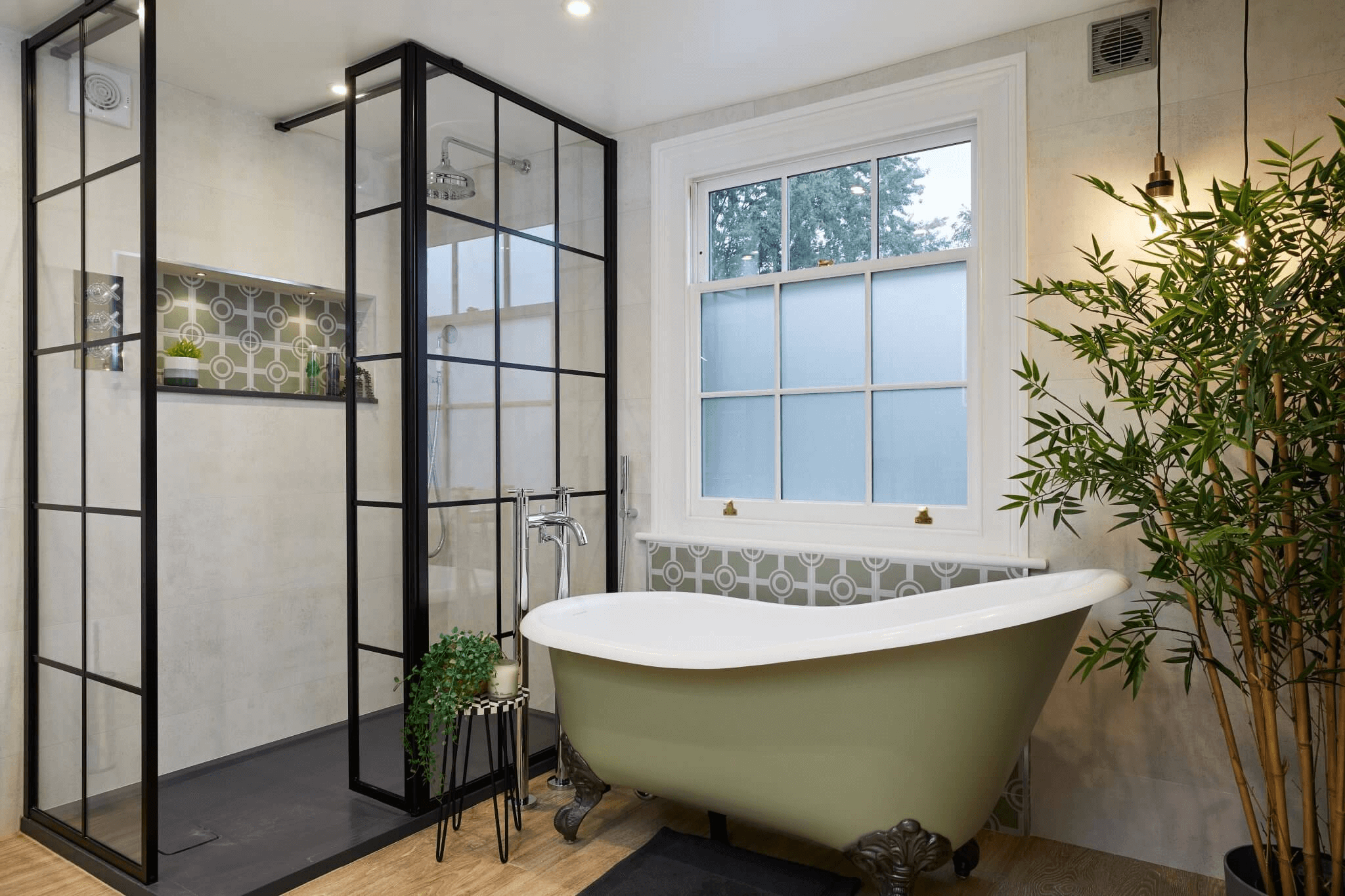Are you ready for pattern?
As we crossed into the New Year of 2020. We saw a surge in clients entering the Bathroom Eleven showroom looking for a bathroom beyond neutrals and greys! And we love it!
Not only are we hearing clients asking for more colour or texture, but also pattern with some opting for artistic wallpapers. So, is pattern the new way forward for bathrooms? Are we bored of grey and beige? How should we be using patterns? And, is there such a thing as ‘too much’?
Today’s post from our Design Manager, who’s an avid fan of the texture-rich and the eclectic, will address all of these points.
Choosing Your Patterned Tile
When starting out with choosing a pattern for your bathroom project, it begins the same way as building a general bathroom concept. We need to understand if we’re looking to create a traditional, classic, contemporary or modern vibe. This will help us narrow down our selection of patterned tiles.
For example, a traditional or classical brief might lead us to romantic and floral patterns. Whereas a modern or contemporary twist would suggest geometric and quirkier or more adventurous patterns.
Finding the perfect tile combination is often the base layer for starting a bathroom design. It can also determine other finishes you choose for your bathroom.
See the moodboard below for these three key choices:

In each of these instances, we chose the patterned tile first. Leading from that, we selected a neutral light wood effect floor tile that becomes the backdrop for each individual furniture finish (ice grey, modern oak, or driftwood) and in turn, lends itself to a choice of paint colour and metal finish for the brass-ware.
One side-note to make around patterned tiles, that often assists clients with their pattern tile choice; Is that some patterns require only an individual tile to work. While other patterns are built up from a connection of four of the same tile to bring the true pattern to light. The size of your floor space will help you identify which way you should go; whether an individual tile pattern or a set of patterned tiles is required.
This will determine how busy the space will look; A big space with a small pattern will look busier than a smaller space with a large pattern. See below how an individual tile requires 3 others to create the desired pattern.

With pattern tiles, remember, this is a commitment that you will live with every day – and not only the pattern, but the colour and tone!
Therefore, choose something that you are certain you will be comfortable with. Some of our clients find the sharper lines of geometric patterns too much and prefer softer lines of a floral pattern. Other clients don’t want a pattern based on a traditional shape and prefer to focus on a natural element such as a leaf pattern.
Finding the right pattern tile is like any other element of your bathroom moodboard: it must be something you love!
How Much Pattern?
As with all Design projects, the answer to ‘how much pattern?’ when designing your bathroom, depends on the space and personal preference. Our clients range from advocates of texture rich and quirky, to those who prefer a serene and spa-like essence to their bathroom. Moreover, what feels relaxing and desirable for one client, isn’t necessarily right for the next.
That’s where our expertise and Design Service comes into play. We are here to help you realise all the options available. Showing you your bathroom in 3D whilst also creating moodboards in our Design Studio, all the while, collaborating with you. This is something our clients, who have taken a plunge into implementing pattern into their bathrooms, have loved playing around with!

Case study.
Typically, in the past we have seen patterned tiles being used mainly on floors, be it a bathroom, kitchen, cloakroom, hallway or utility room. As with most of our designs, we like to break these usual boundaries to create something unique. A design that moves your eye around the room and accentuates key features of your bathroom. Whether that’s a beautiful window, lofty ceilings or spacious flooring.

As with one of our recent projects – such as this family shower room. Our client allowed us to use a pattern tile on the floor and the entire back wall of the shower area. This helped to turn their compact bathroom into a spacious and grand shower room creating a lofty showering experience.
As with this project, it’s worth noting that we were able to keep to our clients brief of a contemporary cool grey palette, whilst still integrating a Parisian café patterned tile which is sympathetic with the age of the property.
Where Should I Use My Pattern Tile?
Now onto the placement of your beautiful pattern tile! This will all depend how much of a feature you would like your tile to be. Or, if there are particular areas of the bathroom you are looking to accentuate.
As seen in our Case study, we used pattern tiles on the floor and the back wall of the shower. In a room where space is tight, this guides the users eyes through the room, into the shower and up towards the ceiling. In turn, highlighting the lofty ceilings. Suddenly, this compact bathroom is a calming space to use and creates a feeling of a much larger space. The essence of that is emphasised by the use of patterned tiles.
Here is a new display in our showroom, showing the use of pattern wallpaper.

Quick tip: Using a pattern tile or waterproof wallpaper on the back wall of a recessed area, be it behind a bath or at the end of a shower. Will trick your eye into believing the room has depth and in turn give your bathroom a sense of additional space.
…and to finish, some of our favourite tiles!
We hope this blog had given you an insight on designing with patterned tiles. Helping you see the benefits of patterns and perhaps helped guide you with the planning of your project.
As always, the Bathroom Eleven team is always on hand to assist with your bathroom project. So please get in touch and we will get back to you as soon as possible!
To finish, here are some of our top picks for patterned tiles coming through in 2020, that we can’t wait to use – who knows, maybe it will be on your project?







